Why you can trust Credit Card
More Info
There’s a whole world of credit cards out there, but Credit Card knows you’re not trying to fit the world into your wallet. Our experts are dedicated to helping you make the right choice, with the best credit cards of 2022 available from our partners — rewards, cash back, travel, balance transfer, 0 percent intro APR and more. We do the research, so you don’t have to sift through hundreds of options to find the best credit card for you.
On this page
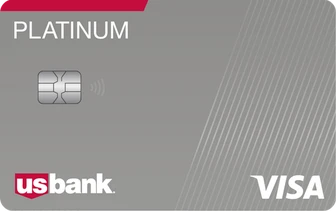
BEST FOR CUSTOMIZABLE REWARDS
U.S. Bank Cash+® Visa Signature® Card

Reward rate
5
5% cash back on your first $2,000 in eligible net purchases each quarter on the combined two categories you choose.
3
5% cash back on prepaid air, hotel and car reservations booked directly in the Rewards Travel Center.
-1
1% cash back on all other eligible purchases.
1
1% cash back on all other eligible purchases.
Intro offer
$200 bonus
Annual fee
$0
Regular APR
16.74% - 26.74% (Variable)
Recommended credit
Good to Excellent (670 - 850)
Pros
- Multiple rotating and fixed bonus categories, which can make it easier to earn rewards quickly
- The $200 sign-up bonus (after spending $1,000 within the first 120 days of account opening) increases the card’s first-year value
Cons
- The $2,000 combined spending cap each quarter for your chosen 5% categories limits your ability to rake in rewards
- Having to track and enroll in rotating categories can be a hassle for some
- New! $200 bonus after spending $1,000 in eligible purchases within the first 120 days of account opening.
- 5% cash back on your first $2,000 in combined eligible purchases each quarter on two categories you choose
- 5% cash back on prepaid air, hotel and car reservations booked directly in the Rewards Travel Center
- 2% cash back on one everyday category, like Gas Stations/EV Charging Stations, Grocery Stores or Restaurants
- 1% cash back on all other eligible purchases
- 0% Intro APR on purchases and balance transfers for the first 15 billing cycles. After that, a variable APR currently 16.74% – 26.74%
- No Annual Fee
- Pay over time by splitting eligible purchases of $100+ into equal monthly payments with U.S. Bank ExtendPay™ Plan.
- Terms and conditions apply.
ADDITIONAL FEATURES
Purchase intro APR
0% Intro APR on purchases for the first 15 billing cycles.
Balance transfer intro APR
0% Intro APR on balance transfers for the first 15 billing cycles.

BEST FOR PERSONAL LOAN ALTERNATIVE
Upgrade Cash Rewards Elite Visa®

Reward rate
2.2
Earn 2.2% unlimited cash back on card purchases every time you make a payment
Intro offer
$200
Annual fee
$0
Regular APR
8.99% - 29.99% (Variable)
Recommended credit
Good to Excellent (670 - 850)
Pros
- You won’t need to use your reward earnings to offset any maintenance fees.
- You’ll earn a bonus after you open a Rewards Checking account and make three purchases with the card in your first 60 days.
Cons
- The high end APR range is well above average. That could prove costly if you don’t have the credit needed to qualify for the lower range and you end up carrying a balance.
- You won’t get a break on interest if you carry a balance since there are no intro APR offers on purchases or balance transfers.
- $200 bonus on your Upgrade Card after opening a Rewards Checking account and making 3 debit card transactions within 60 days.*
- New Feature: Pay your balance in full early each month and avoid interest with EarlyPay.
- Earn 2.2% unlimited cash back on card purchases every time you make a payment
- See if you qualify in seconds with no impact to your credit score
- No Fees – $0 annual fees, $0 activation fees, $0 maintenance fees
- Combine the flexibility of a card with the low cost and predictability of a loan
- Access to a virtual card, so you can start earning while you wait for your card to arrive in the mail.
- Contactless payments with Apple Pay® and Google Pay™
- Mobile app to access your account anytime, anywhere
- Enjoy peace of mind with $0 Fraud liability
- *To qualify for the $200 welcome bonus, you must open and fund a new Upgrade Rewards Checking Account and make 3 debit card transactions within 60 days of your Upgrade Card account opening. The bonus credit will be posted to your Upgrade Card as a rewards credit within 1-2 billing periods following the third debit transaction on your Rewards Checking account. Your Upgrade Card must be in good standing to receive the bonus.
ADDITIONAL FEATURES
Purchase intro APR
N/A
Balance transfer intro APR
N/A
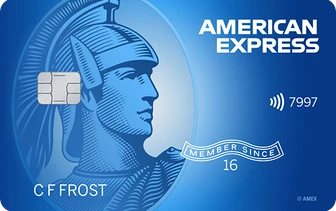
BEST FOR GAS
Blue Cash Everyday® Card from American Express

Reward rate
3
3% Cash Back at U.S. supermarkets on up to $6,000 per year in purchases, then 1%.
1
New! 3% Cash Back on U.S. online retail purchases, on up to $6,000 per year, then 1%.
-1
1% Cash Back on other purchases.
1
1% Cash Back on other purchases.
Intro offer
$200
Annual fee
$0
Regular APR
16.24%-27.24% Variable
Recommended credit
Good to Excellent (670 - 850)
Pros
- It carries one of the best combined cash back rates available at no annual fee at U.S. gas stations and U.S. supermarkets. Those two categories make up a big chunk of the average person’s budget.
- You can earn $7 back per month on The Disney Bundle streaming package, which includes Disney+, Hulu, and ESPN+ (each month you spend $13.99 or more on an eligible subscription, terms apply). To earn that much back in a month via the card’s 3 percent categories, you’d typically need to spend over $230.
Cons
- You’ll only earn 3 percent cash back on your first $6,000 in annual spending in each of the card’s bonus categories (then 1 percent). While that’s a high limit, it could hold you back if you’re sharing an account across multiple households.
- The card carries a 2.7 percent foreign transaction fee, so it’s not a good option if you’re looking for a single rewards card you can use at home and abroad.
- Earn a $200 statement credit after you spend $2,000 in purchases on your new Card within the first 6 months.
- No Annual Fee.
- Balance Transfer is back! Enjoy 0% intro APR on purchases and balance transfers for 15 months from the date of account opening. After that, 16.24% to 27.24% variable APR.
- 3% Cash Back at U.S. supermarkets on up to $6,000 per year in purchases, then 1%.
- New! 3% Cash Back on U.S. online retail purchases, on up to $6,000 per year, then 1%.
- 3% Cash Back at U.S. gas stations, on up to $6,000 per year, then 1%.
- Get $7 back each month after using your Blue Cash Everyday® Card to spend $13.99 or more each month on an eligible subscription to The Disney Bundle, which includes Disney+, Hulu, and ESPN+. Enrollment required.
- Terms Apply.
ADDITIONAL FEATURES
Purchase intro APR
0% on purchases for 15 months
Balance transfer intro APR
0% on balance transfers for 15 months
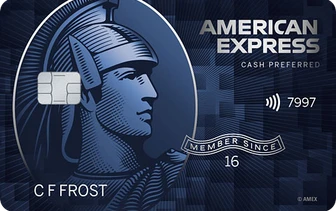
BEST FOR GROCERIES
Blue Cash Preferred® Card from American Express

Reward rate
6
6% Cash Back at U.S. supermarkets on up to $6,000 per year in purchases (then 1%).
1
6% Cash Back on select U.S. streaming subscriptions.
3
3% Cash Back at U.S. gas stations
0
3% Cash Back at U.S. gas stations
1
1% Cash Back on other purchases
Intro offer
$350
Annual fee
$95
Regular APR
16.24%-26.24% Variable
Recommended credit
Good to Excellent (670 - 850)
Pros
- The base reward program is uber-lucrative, making this card a good choice for people looking for long-term value.
- You don’t have to keep track of rotating spending categories or enrollment deadlines.
Cons
- There is no intro APR offer on balance transfers.
- You won’t earn the extra rewards for grocery shopping at major superstores and wholesale clubs, as those don’t count as U.S. supermarkets.
- Earn a $350 statement credit after you spend $3,000 in purchases on your new Card within the first 6 months.
- Buy Now, Pay Later: Enjoy $0 intro plan fees when you use Plan It® to split up large purchases into monthly installments. Pay $0 plan fees on plans created during the first 12 months after account opening. Plans created after that will have a fixed monthly plan fee up to 1.33% of each purchase amount moved into a plan based on the plan duration, the APR that would otherwise apply to the purchase, and other factors.
- Low intro APR: 0% intro APR for 12 months on purchases from the date of account opening, then a variable rate, 16.24% to 26.24%.
- 6% Cash Back at U.S. supermarkets on up to $6,000 per year in purchases (then 1%).
- 6% Cash Back on select U.S. streaming subscriptions.
- 3% Cash Back at U.S. gas stations and on transit (including taxis/rideshare, parking, tolls, trains, buses and more).
- 1% Cash Back on other purchases.
- Cash Back is received in the form of Reward Dollars that can be redeemed as a statement credit.
- $95 Annual Fee.
- Terms Apply.
ADDITIONAL FEATURES
Purchase intro APR
0% on purchases for 12 months
Balance transfer intro APR
N/A
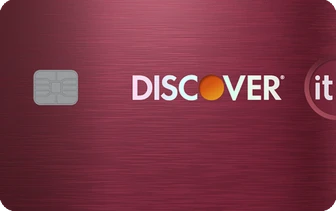
BEST FOR ROTATING CASH BACK CATEGORIES
Discover it® Cash Back

Reward rate
5
Earn 5% cash back on everyday purchases at different places each quarter like Amazon.com, grocery stores, restaurants, gas stations and when you pay using PayPal, up to the quarterly maximum when you activate.
1
Plus, earn unlimited 1% cash back on all other purchases – automatically.
Intro offer
Cashback Match™
Annual fee
$0
Regular APR
13.49% - 24.49% Variable
Recommended credit
Good to Excellent (670 - 850)
Pros
- Discover will match the cash back you earn at the end of the first year.
- There are a few cash back redemption options, including credit to your account and donations.
Cons
- You must enroll to take advantage of the bonus categories each quarter.
- There is a spending limit on your highest cash back category each quarter ($1,500 in combined purchases per quarter).
- Intro Offer: Unlimited Cashback Match – only from Discover. Discover will automatically match all the cash back you’ve earned at the end of your first year! There’s no minimum spending or maximum rewards. You could turn $150 cash back into $300.
- Earn 5% cash back on everyday purchases at different places each quarter like Amazon.com, grocery stores, restaurants, gas stations and when you pay using PayPal, up to the quarterly maximum when you activate. Plus, earn unlimited 1% cash back on all other purchases – automatically.
- New! Discover helps remove your personal information from select people-search websites. Activate by mobile app for free.
- Every $1 you earn in cash back is $1 you can redeem.
- New Intro APR: Get a 0% intro APR for 15 months on purchases. Then 13.49% to 24.49% Standard Variable Purchase APR applies, based on credit worthiness.
- No annual fee.
ADDITIONAL FEATURES
Purchase intro APR
0% for 15 months
Balance transfer intro APR
0% for 15 months
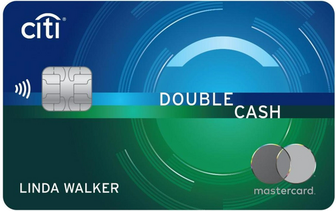
BEST FOR UP TO 2% CASH BACK
Citi® Double Cash Card

Reward rate
2
Earn 2% on every purchase with unlimited 1% cash back when you buy, plus an additional 1% as you pay for those purchases.
Intro offer
$200 Cash Back
Annual fee
$0
Regular APR
16.24% - 26.24% (Variable)
Recommended credit
Good to Excellent (670 - 850)
Pros
- You can convert your cash back earnings to Citi ThankYou points when paired with a card like the Citi Premier® Card, which can be redeemed for travel, gift cards and more.
- There are no spending category restrictions or rotating categories
Cons
- Your rewards can expire with this card if you don’t use it for a year.
- The sign-up bonus spending requirement is higher than you’ll find on many no-annual-fee cash back cards.
- Earn 2% on every purchase with unlimited 1% cash back when you buy, plus an additional 1% as you pay for those purchases.
- For a limited time, earn $200 cash back after spending $1,500 on purchases in the first 6 months of account opening.
- Balance Transfer Only Offer: 0% intro APR on Balance Transfers for 18 months. After that, the variable APR will be 16.24% – 26.24%, based on your creditworthiness.
- Balance Transfers do not earn cash back. Intro APR does not apply to purchases.
- If you transfer a balance, interest will be charged on your purchases unless you pay your entire balance (including balance transfers) by the due date each month.
- There is an intro balance transfer fee of 3% of each transfer (minimum $5) completed within the first 4 months of account opening. After that, your fee will be 5% of each transfer (minimum $5).
ADDITIONAL FEATURES
Purchase intro APR
N/A
Balance transfer intro APR
0% intro for 18 months on Balance Transfers
A closer look at top credit cards for bad credit
Capital One Platinum Secured Credit Card: Best for rebuilding credit
- What we love about the Capital One Platinum Secured Credit Card: With its automatic credit line review after six months of responsible use and its security deposit that’s lower than most annual fees, the Capital One Platinum Secured is an affordable and efficient credit-building tool.
- Who this card is good for: Simplicity-lovers building their credit scores. There’s not a lot of fluff that comes with this card — you won’t earn cash back or points.
- Alternatives: If you’re not willing to tie up money in a security deposit, you may be able to qualify for an unsecured credit card like the Petal 1 Visa card or the Mission Lane Visa card
Read our Capital One Platinum Secured Credit Card review.
Jump back to offer details.
Mission Lane Visa Credit Card: Best for low annual fee
- What we love about the Mission Lane Visa Credit Card: This card is a straightforward credit-building tool. It doesn’t come with a lot of the bells and whistles of traditional credit cards, but it makes up for it by being an accessible, inexpensive option for building credit.
- Who this card is good for: Credit builders looking for an inexpensive card to start their credit-building journey. The annual fee is reasonable — ranging from $0 to $59 — and there is no need to tie up your funds in a security deposit.
- Alternatives: If you’re looking for a card that will give you a higher credit limit to work with, it may be worth it to consider other options. The Capital One Quicksilver Secured Cash Rewards Credit Card, for example, provides cardholders the opportunity to have a credit limit that matches their security deposit, so your credit limit can be as high or low as you’d like.
Read our Mission Lane Visa Credit Card review.
Jump back to offer details.
Discover it Secured Credit Card: Best secured card with rewards
- What we love about the Discover it Secured Credit Card: It’s rare to find a secured credit card with features and benefits that mimic those of a top rewards card. This card not only earns rewards, but also touts notable features like the Cashback Match™ offer (Discover will match all the cash back you’ve earned at the end of your first year), all while charging no annual fee.
- Who this card is good for: Credit-builders who want a chance to show off responsible credit use while avoiding annual fees and earning rewards. This is one of the only no-annual-fee cards available with poor credit that earns cash back, so it should offer solid long-term value even after you’ve used it to build credit history.
- Alternatives: If paying a security deposit isn’t an option for you, there are unsecured credit cards that are open to people with low credit scores. The Petal 1 “No Annual Fee” Visa Credit Card is a solid option thanks to its $0 annual fee and chance at a high credit limit. The Mission Lane Visa Credit Card is another relatively low-cost — if bare-bones — option for people who have bad credit due to credit missteps like late payments.
Read our Discover it Secured Credit Card review.
Jump back to offer details.
Petal 1 “No Annual Fee” Visa Credit Card: Best for unsecured credit-building
- What we love about the Petal 1 “No Annual Fee” Visa Credit Card: Along with your credit score, this low-cost unsecured credit card uses alternative credit data to help determine your creditworthiness, which makes it more accessible to people with limited or no credit history. It also comes with a taste of rewards: Cardholders are automatically enrolled in the Petal Perks program and can earn anywhere from 2 percent to 10 percent cash back at eligible merchants.
- Who this card is good for: Credit-builders who can keep their balances low or paid in full and who want to graduate to the Petal® 2 “Cash Back, No Fees” Visa® Credit Card, which is one of the best credit-building cards for people with limited or no credit history.
- Alternatives: If you can’t qualify for the Petal 1 card or worry about the card’s high APR range, a low-interest secured credit card is a good substitute that can give you time to get credit-ready for better options. The OpenSky Secured Visa and the Merrick Bank Secured Credit Card both carry relatively low annual fees and APRs, making them great options for building credit with a lower ongoing APR for times when you can’t pay your balance in full.
Read our Petal 1 “No Annual Fee” Visa Credit Card review.
Jump back to offer details.
Petal 1 “No Annual Fee” Visa Credit Card: Best for unsecured credit-building
- What we love about the Petal 1 “No Annual Fee” Visa Credit Card: Along with your credit score, this low-cost unsecured credit card uses alternative credit data to help determine your creditworthiness, which makes it more accessible to people with limited or no credit history. It also comes with a taste of rewards: Cardholders are automatically enrolled in the Petal Perks program and can earn anywhere from 2 percent to 10 percent cash back at eligible merchants.
- Who this card is good for: Credit-builders who can keep their balances low or paid in full and who want to graduate to the Petal® 2 “Cash Back, No Fees” Visa® Credit Card, which is one of the best credit-building cards for people with limited or no credit history.
- Alternatives: If you can’t qualify for the Petal 1 card or worry about the card’s high APR range, a low-interest secured credit card is a good substitute that can give you time to get credit-ready for better options. The OpenSky Secured Visa and the Merrick Bank Secured Credit Card both carry relatively low annual fees and APRs, making them great options for building credit with a lower ongoing APR for times when you can’t pay your balance in full.
Read our Petal 1 “No Annual Fee” Visa Credit Card review.
Jump back to offer details.
Self – Credit Builder Account with Secured Visa Credit Card: Best for building credit with savings
- What we love about the Self – Credit Builder Account with Secured Visa: When you’re approved for the Self Visa card, you’re granted a loan that’s placed into an interest-bearing account. Repayments of that loan are reported to the credit bureaus — helping you boost your credit score. Once you’ve repaid the loan, the principal and interest can be used as a security deposit for your credit card.
- Who this card is good for: People who want to build their credit and their savings simultaneously.
- Alternatives: If you’re looking for access to a line of credit immediately, a secured card like the Citi® Secured Mastercard® could be the right choice. The $200 minimum security deposit could be refunded after 18 months of using the card responsibly.
Read our Self – Credit Builder Account with Secured Visa Credit Card review.
Jump back to offer details.
OpenSky Secured Visa Credit Card: Best for low-interest credit-building
- What we love about the OpenSky Secured Visa Credit Card: You can choose your own credit limit (up to $3,000 with a matching deposit). And if you tend to carry a balance, its 18.14 percent variable APR can save you a lot of money compared to other credit cards for bad credit.
- Who this card is good for: Someone who wants more control over their credit. Choosing your own credit limit can help you manage your credit utilization ratio and credit score more effectively.
- Alternatives: If you can pay your balances in full each month and don’t need a low-interest credit card, the BankAmericard® Secured Credit Card comes with a higher potential credit limit (a maximum of $5,000 based on your deposit) but also a higher APR.
Jump back to offer details.
What is a bad credit score?
A bad credit score — a FICO score under 579 — can happen for a number of reasons and negatively impact your finances. Defaulting on loans, missing credit card payments or even opening too many credit cards can negatively impact your credit score. If you’re a victim of credit card fraud or identity theft, your credit score could also take a hit, making it more difficult to qualify for the financial products and services you need. Renting an apartment, getting a credit card or applying for a mortgage all become more difficult with poor credit. Thankfully, there are ways to build your credit with a credit card.
Creditcard's Insight
Checking your credit score regularly is a good financial practice that can help you spot inaccuracies. Spotting inaccuracies on your credit report can help you keep your credit report tidy, making it easier to get and keep your credit score where it needs to be. Luckily “cleaning” your credit report is a fairly easy five-step process.
When should you get a credit card for bad credit?
There are credit cards designed to help you repair your credit. They have fewer requirements needed to qualify and come with credit-building features, which may include affordable interest rates, limited fees or free credit score access and credit monitoring. When used responsibly, credit cards for bad credit are a good fit for the following people:
People who have made credit mistakes in the past may find it a bit difficult to qualify for a more typical unsecured credit card or a credit card that comes with a lot of perks and rewards. Secured credit cards and unsecured credit cards built for people with bad credit often have low barriers of entry for approval in terms of credit scores. Choose a standout card in the category, focus on using it responsibly (via on-time payments and keeping your credit utilization ratio low) and, ultimately, you should be able to “graduate” to a better credit card. Keep in mind if you use an unsecured credit card with bad credit, you may be subject to higher APRs, very little benefits and annual fees.
Credit cards for bad credit are often accessible for people who have little or no credit (there are also great cards available for people with no credit history), given the lighter qualification requirements. If you’re a student seeking to start building credit, you may find a better match in the various student cards on the market, which feature student-centric perks and benefits that secured credit cards do not. If you’re not a student, but still brand-new to
Types of credit cards for bad credit
Secured cards for bad credit
Unsecured cards for bad credit
Student cards for bad credit
How to choose the right credit card for bad credit
How to build your credit score with a credit card
- Check your credit report. If you know how to read your credit report, you’ll have an easier time tracking your progress to good credit. Credit report errors are also common, so keeping an eye on your credit report will make it easier to stay on top of any mistakes that could have a negative impact on your credit.
- Pay down debt. Carrying too much debt makes it harder to save money, grow your credit score, and develop good credit habits. To grow your credit score, you’ll need to make sure to pay down and stay out of credit card debt.
- Have a budget. Sticking to a budget makes it much easier to pay off credit card debt and grow your personal finances. You can choose a budgeting method that’s right for you or use a budgeting app, which can take some of the stress and hard work out of the process.
- Practice good credit habits. To grow your credit score, you’ll need to pay your bills on time, keep a healthy amount of available credit, maintain low balances when possible and do your best not to spend beyond your means. Your continued good credit behavior will be rewarded as enough time passes and past debts fall off your credit report.
- Keep accounts open. As time goes on, you may outgrow your starter credit card. And while it may make sense to close a secured credit card or an unused card with an annual fee, there are consequences to closing a credit card. To protect your credit score, you should consider keeping your accounts open.
Creditcard's Insight
There are major changes to how medical debt impacts credit scores. Implemented July 1, 2022, medical debt was wiped from Equifax, TransUnion and Experian credit reports. Many consumers could see credit score increases of up to 100 points from the three credit bureaus’ policy changes.
Credit-building alternatives to credit cards
Get a credit-builder loan
Repay an existing loan
Report existing bills
Secured cards for bad credit
Video guide: What to do if your credit card application is denied
How we chose our list of top cards for bad credit
Credit Card uses a 5-star scoring system that evaluates credit cards based on annual fees, APR , sign-up bonuses, rewards programs and other features. For credit cards tailored to people with poor or bad credit, we focus on the attributes you might be most concerned about when selecting a new credit card.
Annual fee
Getting charged a fee every year for being a cardholder can eat into the value you’re getting from your card. We look for benefits that help make up for the cost of an annual fee.
0% introductory APR offer
The annual percentage rate is the rate of interest you’ll have to pay on your outstanding balance. The longer the period with a 0 percent APR, the better.
Balance transfer offer
When you move part or all of the outstanding balance you owe from one lender to another, this is called a balance transfer. Some cards offer a low fee on transferred balances — usually around 3 percent to 5 percent of the transferred amount. Transferring a balance can be a tool to consolidate debt, pay down what you owe at a lower rate and improve your credit score.
Rewards
Even if your credit score isn’t perfect, there are cards that offer fantastic rewards that help you earn cash back, points, or miles on what you’re spending every day. We evaluate the rewards and identify which card is a good fit for different types of spenders.
Further reading on bad credit credit cards
Having bad credit is an uphill battle, but being informed and armed with research is the best tool in your arsenal. Here’s more information on credit cards and bad credit
- Here’s what you need to know about average credit card debt and delinquency in the U.S.
- Credit cards for a 500 credit score (or less).
- Is no credit better than bad credit? We weigh in.
